Expanding Sphere of Innovation @ CityU
Exhibition at: City University of Hong Kong (CityU)
May 2013

The installation consists of 30 visualisation examples running in the iDome.
They are each rendered as spherical panoramas and as such the user can navigate
horizontally and/or vertically using the supplied SpaceMouse. The movies are
presented using Quartz Composer, rendered to fisheye using a GLSL shader
and warped in realtime using the pbmesh patch.

Network visualisation
An optional display (shown on the right) displays information about the current
visualisation. This is implemented as a separate Quartz Compositions, network
messages are exchanged between the "player" compositions and the "display" composition.

Primate skulls

Oceans of the Earth

Molecular visualisation

Galaxy formation
Samples from the iDome visualisation show reel. Note the images below look
distorted because they are spherical (equirectangular) projections, in the
iDome they will not appear distorted and the user can freely navigate
(panning horizontally and vertically) within the movies.
The flat iMac screen (right of dome below) consists of a short text description,
the text will be of similar length and style to that shown below.

Illustrates flat screen showing short explanatory text for each visualisation
Rabbits liver
Visualisation of a computer tomography 3D volumetric scan of a rabbits liver, approximately 50mm across. Used as a model in liver cancer research that aims to improve therapy.
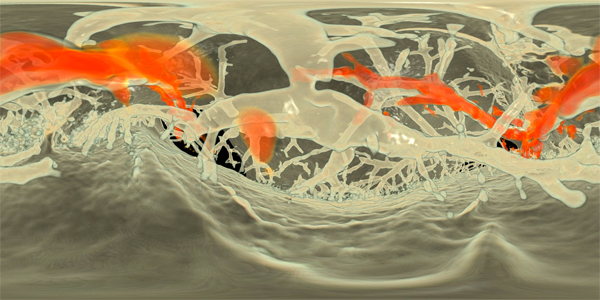
Pyrrole molecule
Visualisation of various reactions of the Pyrrole molecule, a hetero-cyclic aromatic organic component consisting of a 5 member ring.
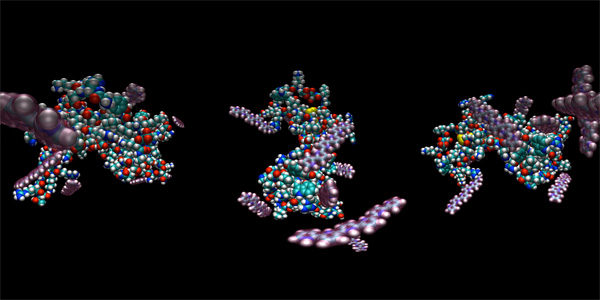
Reticulite
Reticulite is a raw form of foamed lava found only on the volcanic islands of Hawaii. Like the more usual pumice this rock is very light but unlike pumice where the air is trapped, Reticulite does not float. This micro-CT sample is 5mm across.
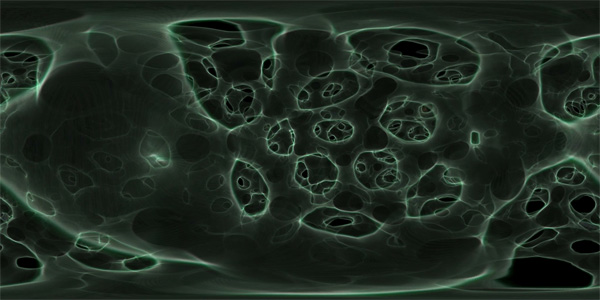
Whale cochlear
Ear bone, cochlear, and semicircular channels of a fossil whale from the mammalodon colliveri period (approximately 25 million years old). Located in Torquay, Victoria, Australia. This visualisation created from microCT scans.
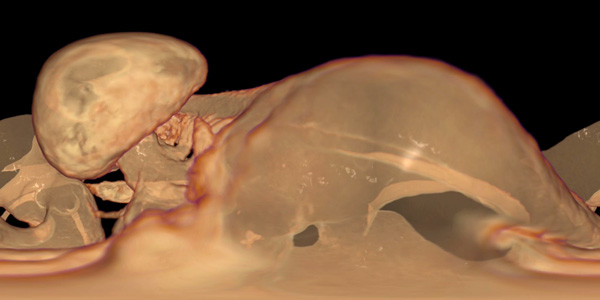
Synthetic crystal
Visualisation of synthetic crystals and corresponding Hirshfeld surfaces (blue). The Hirshfeld surface is the region where the promolecule contribution to the procrystal electron density exceeds that from all other molecules in the crystal. It enables supra-molecular chemists and crystal engineers to gain insight into crystal packing behaviour.

Graphene (Ladybug)
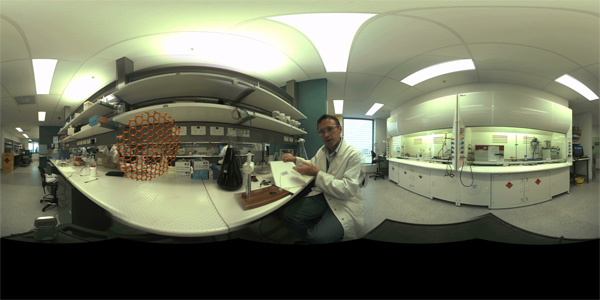
Nanotube (Ladybug)
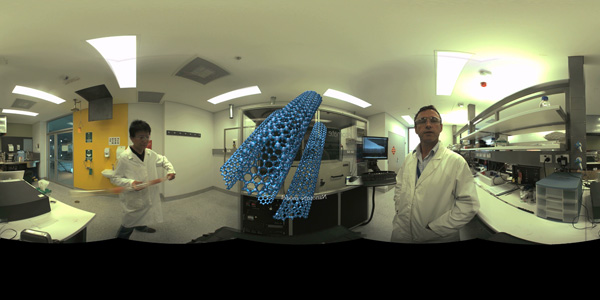
Nanotube
Carbon nonotubes are members of the fullerene family that have a cylindrical nanostructure. They have extraordinary thermal, mechanical, and electrical properties. They are studied and constructed in materials sciences and find application as additives to structural materials, for example some car parts and sporting implements.
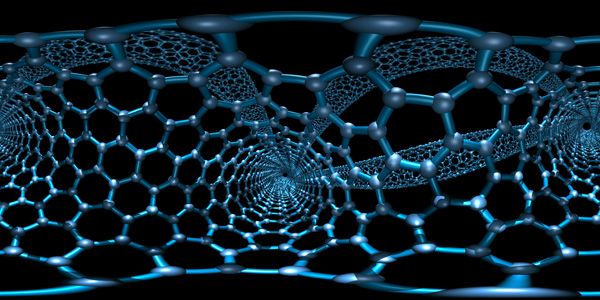
Limestone
Limestone sample from Mt Gambier, South Australia. 30 million years ago the South Australia coast was covered in a shallow ocean. Shells and fish bones sank to the bottom forming the thick limestone deposits that give the region its name, the Limestone Coast. This 5mm core sample reveals this graveyard of fossil marine organisms.
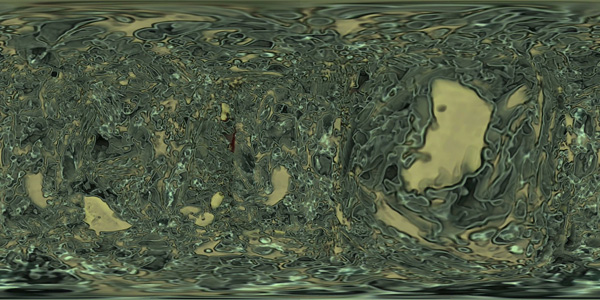
Fish eyeball
Fossil fish eyeball (Placoderm), 410 million years old, found in Wee Jasper, New South Wales, Australia. The Placoderm fish are extinct but originally lived in the Devonian Period, approximately 400 million years ago. They are generally considered to be one of the first jawed fish and also represent one of the first known cases of live birth.
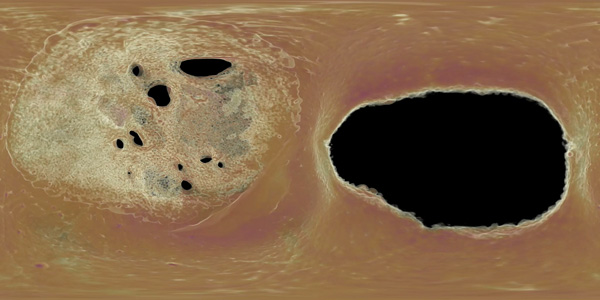
Lizard head
MicroCT scan of a lizards head, a common garden skink. 10mm across.
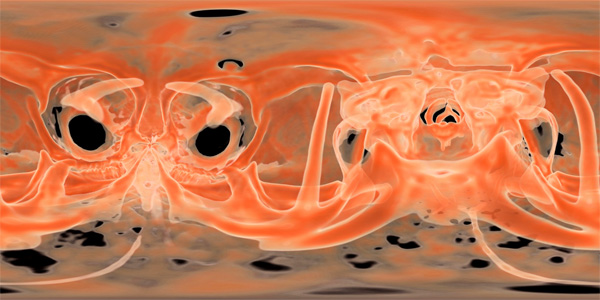
Darkmatter
An enormously detailed region of the universe around a Dark Matter halo similar to that of our own galaxy, the Milky Way.
Galaxies and their satellites are caught mid-collapse as they fall along the Cosmic Web filaments to the centre of the simulation, forming a catastrophic collision that has all but destroyed the central galaxy.
A similar fate will befall our galaxy when we collide with our neighbour, the Andromeda galaxy, in approximately 4 billion years.
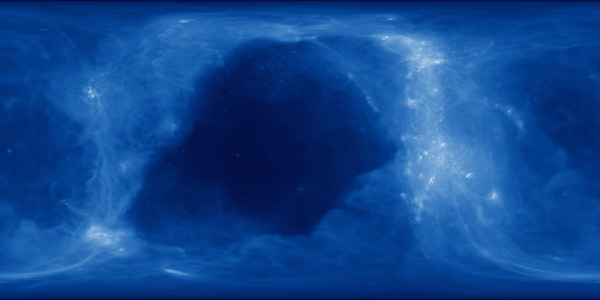
Galaxy formation
The formation of a dwarf galaxy from just after the Big Bang to the present day - within the larger Dark Matter structure of the Universe.
Gas falls within Dark Matter filaments, part of the larger Cosmic Web, that provides the gravitational backbone that shapes galaxies.
The gas spins up as it falls deeper into the Dark Matter halo, forming spiral arms and, eventually, stars - at the very centre of the densest, coldest gas.
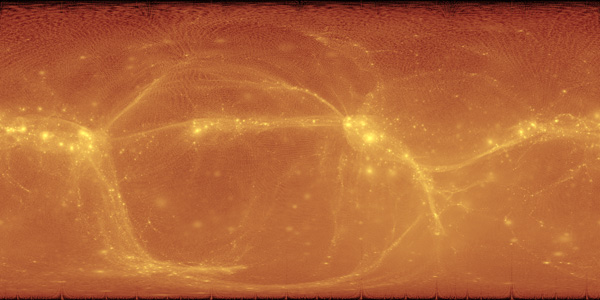
Large scale structure of the Universe
We see the formation of the very largest objects in the universe within a Dark Matter simulation that traces the emergence of structure from an almost perfectly smooth state - just after the Big Bang - to the present day.
Dark Matter structures contain thousands of galaxies like our own Milky Way - barely visible as bright knots of matter at these enormous scales.
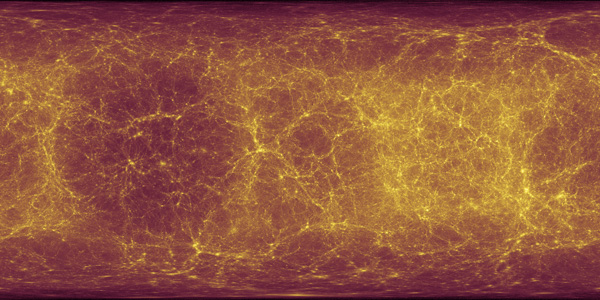
Gogo fish
Fossil of the skull of a Gogonasus Andewsae fish, one of the earliest known air breathing fish dated at around 380 million years old (late Devonian period). The fish was quite small only reaching about 30cm long, this sample was found in Gogo, in the West Kimberleys of Australia, hence the name.
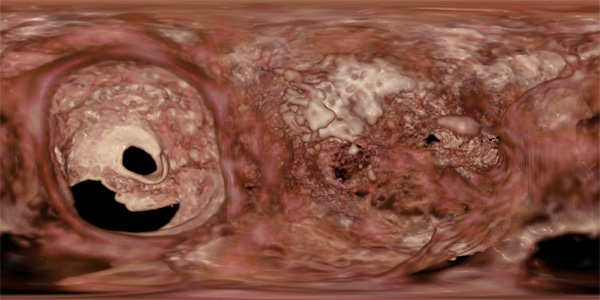
Graphene
Graphene is a one atom thick, 2 dimensional hexagonal honeycomb crystal lattice made entirely from carbon atoms. It is a basic building block for other graphitic materials, for example, it can be rolled to form nanotubes, stacked to form graphite, and wrapped to form fullerenes.

HIV virus
Molecular simulation of the HIV virus (Human immunodeficiency virus) in water (red-green spheres). Unlike most other retroviruses it is roughly spherical with a diameter of approximately 100nm, large for a virus.
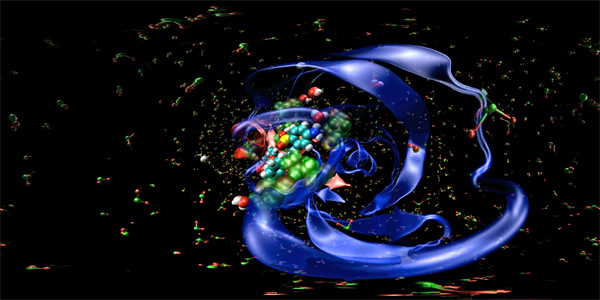
Networks
Visualisation of flow networks using as DLA (Diffusion Limited Aggregation) fractals as a model to study the relationship between electrostatic and diffusive properties of natural fractals. Main application are models for various porous materials and how Laplacian and Brownian motion explains transport through these materials.

Primates
Visualisation of CT (X-ray computed tomography) scans of primate skulls. Orangutan, gorilla, chimpanzee, and gibbon. Can you identify them? Unlike MRI scans which give essentially water content, CT scans give direct density volumes which can then be visualised using so called volume visualisation.
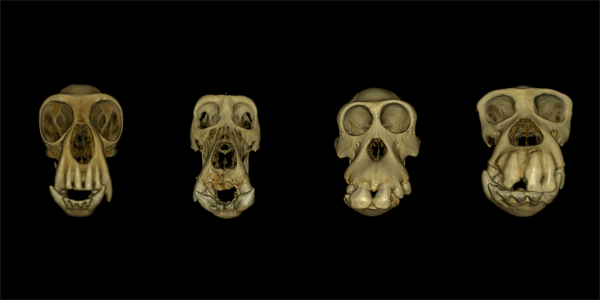
Oceans
What does the Earth look like if the “earth” is taken away? This visualisation shows the Oceans and their depth (20x depth exaggeration). Derived from the GEBCO data (General Bathymetric Chart of the Oceans). As land based creatures we don’t recognise the shapes of the oceans, nor do we generally appreciate their size.


|